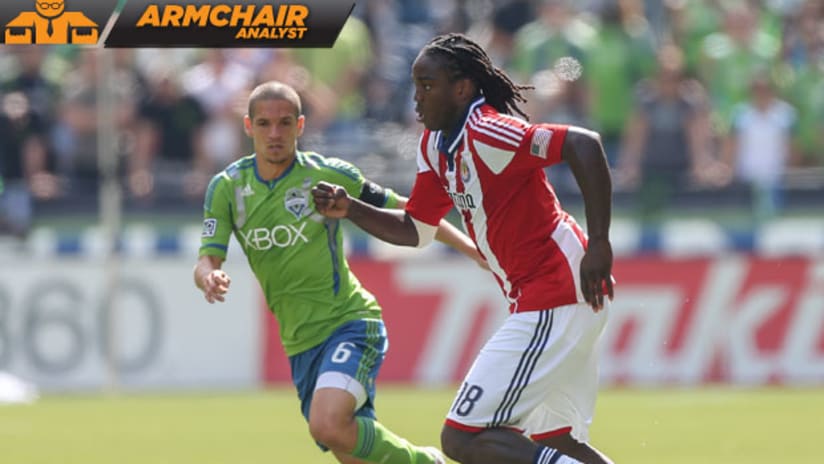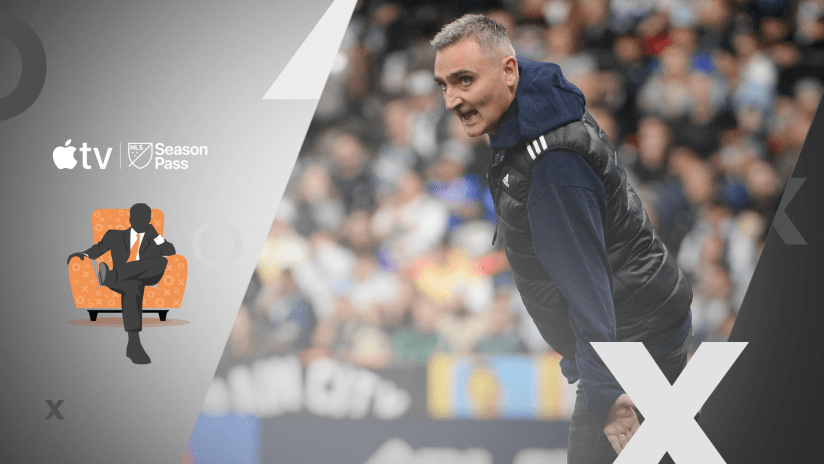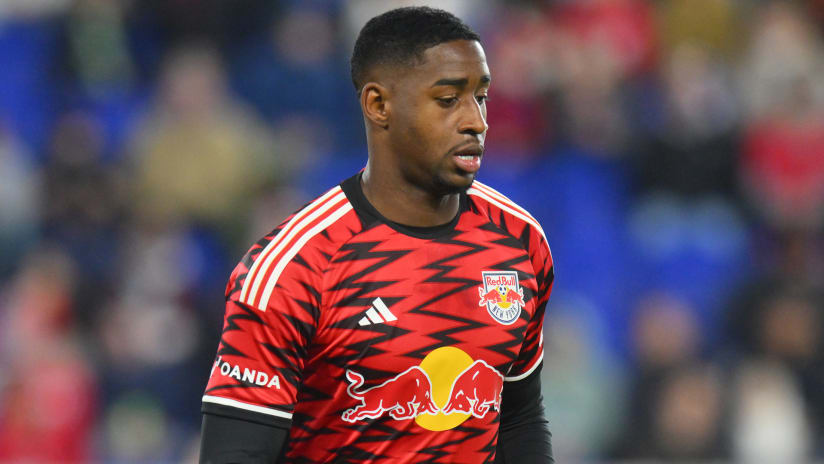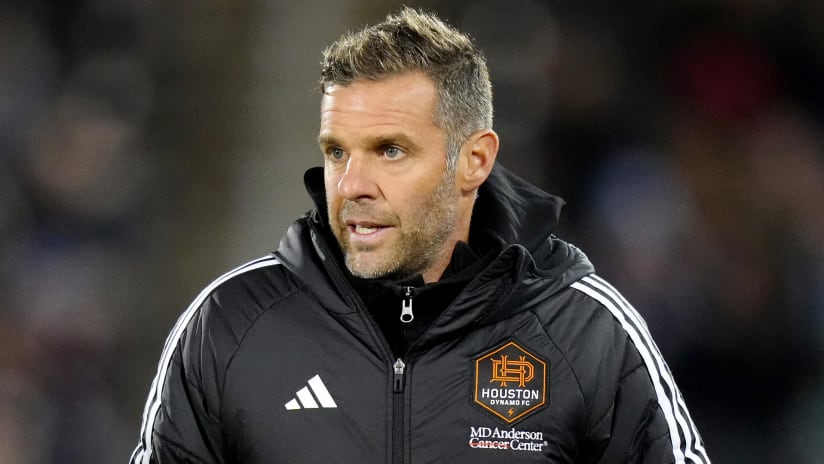For the better part of 90 minutes earlier this week, the Portland Timbers strung passes together in the central midfield against a desperately chasing Seattle Sounders team.
Mostly this was due to the talent available to both coaches. Caleb Porter had something pretty close to a first-choice team for the first half, and a collection of reserves who’ve acquitted themselves very well thus far (seriously, Michael Nanchoff has been legit) in the preseason. Sigi Schmid, on the other hand, was running out trialists and draft picks in bulk.
So, don’t read too much into the result (1-0 Timbers, for what that’s worth). But there’s always something to read into how the game is played, and this one was a bit of a metaphor for the 4-3-3 vs. 4-4-2 argument on something of a global scale.
The strength of the 4-3-3 is twofold: If you’ve got committed wingers, they can pin back the opposing fullbacks and prevent overlaps. This makes the 4-4-2 stagnant and predictable, like a Rick Reilly column (spoiler alert: The hard-working, blue-collar athlete really loves his dad and mom). “Stagnant and predictable” is always a bad thing in soccer, especially if you need those fullbacks to provide your attacking width.
Houston's dynamic 4-3-3
And chances are you do need those fullbacks to provide that attacking width, because without them, the 4-4-2 becomes easy to defend. By virtue of going 4-4-2 vs. 4-3-3, you’re outnumbered in central midfield, which means you're constantly losing the second ball, chasing instead of playing passing lanes, and struggling to pressure incoming service.
The way that sort of game plays out is the 4-3-3 team ends up holding something like 60 percent of the possession, a good chunk of which comes about 45 yards from goal as they probe for attacking openings (I'm painting with a broad brush here, but you generally get my meaining).
With Seattle's 4-4-2, however, that’s usually not the case because one of their central midfielders is Osvaldo Alonso. I’m not willing to call him the best d-mid in MLS history just yet, but one MLS coach I talked to last week was. And nobody really put up too much of an argument against that assertion.
With Alonso out there, you have technique, range, a superhuman ability to win the second ball and precision switches of play. He makes the 4-4-2 work. He wins Schmid most battles, even if Seattle's outnumbered, based upon pure talent.
But Schmid didn't have Alonso; he had trialists and draft picks, and a numbers game that his team lost – badly.
The key to countering that numbers game in central midfield, then, is for the 4-4-2 coach to either tell one of his wide players to pinch inside, thus risking exposure of one flank, or tell his second forward to drop deeper, potentially isolating the other forward up top.
It’s a pick your poison situation. If you expose your left flank, for example, you invite both the opposing right winger and fullback to go 2-on-1 against your left back. That’s another losing numbers game, similar to the one that helped kill off the wingback and the 3-5-2 about 10 years ago.
If, instead, you choose to isolate your forward, you’d better hope that he’s big, strong, patient and an adept passer in traffic. Frank Yallop got away with it repeatedly last year – check out Chris Wondolowski’s heat maps vs. 4-3-3 teams some time – because he had Alan Gordon or Steven Lenhart to take a beating, hold the ball, and engage with his teammates.
LA’s Bruce Arena and Houston’s Dominic Kinnear had other methods of dealing with that numbers game, dropping their line of confrontation deeper and relying on superior outlet passing from the central midfield and superb movement from the forward pairing. Michael Cox of ZonalMarking.net even commented upon it in his breakdown of MLS Cup – “it’s not often that ‘working the channels’ is such a key feature of a modern football match” was his take.
And he’s right. The 4-4-2 is quickly fading away, and while I doubt it’ll become the oddity that the 3-5-2 has turned into, I’m equally doubtful that it’ll remain the default formation for most teams. Kinnear, for one, has already tinkered with the 4-3-3, and seems inclined to play a diamond-4 midfield this year. Schmid, it seems, could be next in line for a formation change.
It’s telling that most of the talk about who Seattle’s next DP will be has revolved around either Espanyol’s Joan Verdú – an out-and-out midfielder – or Valencia’s Nelson Váldez, who’s more of an advanced playmaker in the Federico Higuaín mold.
Both of these guys play deeper than the departed Fredy Montero. Both would do more of their work in the central midfield, and both would facilitate a shift from the 4-4-2 that’s served Seattle so well since 2009 to more of either a 4-3-3 or its close cousin, the 4-2-3-1.
Add in the fact that the Sounders are already stuffed with box-to-box central midfielders who fit perfectly next to Alonso – Christian Tiffert, Andy Rose, Brad Evans and now Shalrie Joseph in for training – and the shift seems almost inevitable.
But will it be a winning one? That depends upon whether or not Eddie Johnson can keep his 2012 form, and if Steve Zakuani or one of the other wingers can make up for the bulk of Montero’s now-departed goals. If they get things right (Schmid’s made a career of that, by the way), there’s no reason to think it can’t be done.
And in the process, it'll signal the continuation of a league-wide shift, making LA and San Jose the only true 4-4-2 teams left in MLS.
Five years ago, that was unthinkable. In 2013, it's looking more and more like reality.














